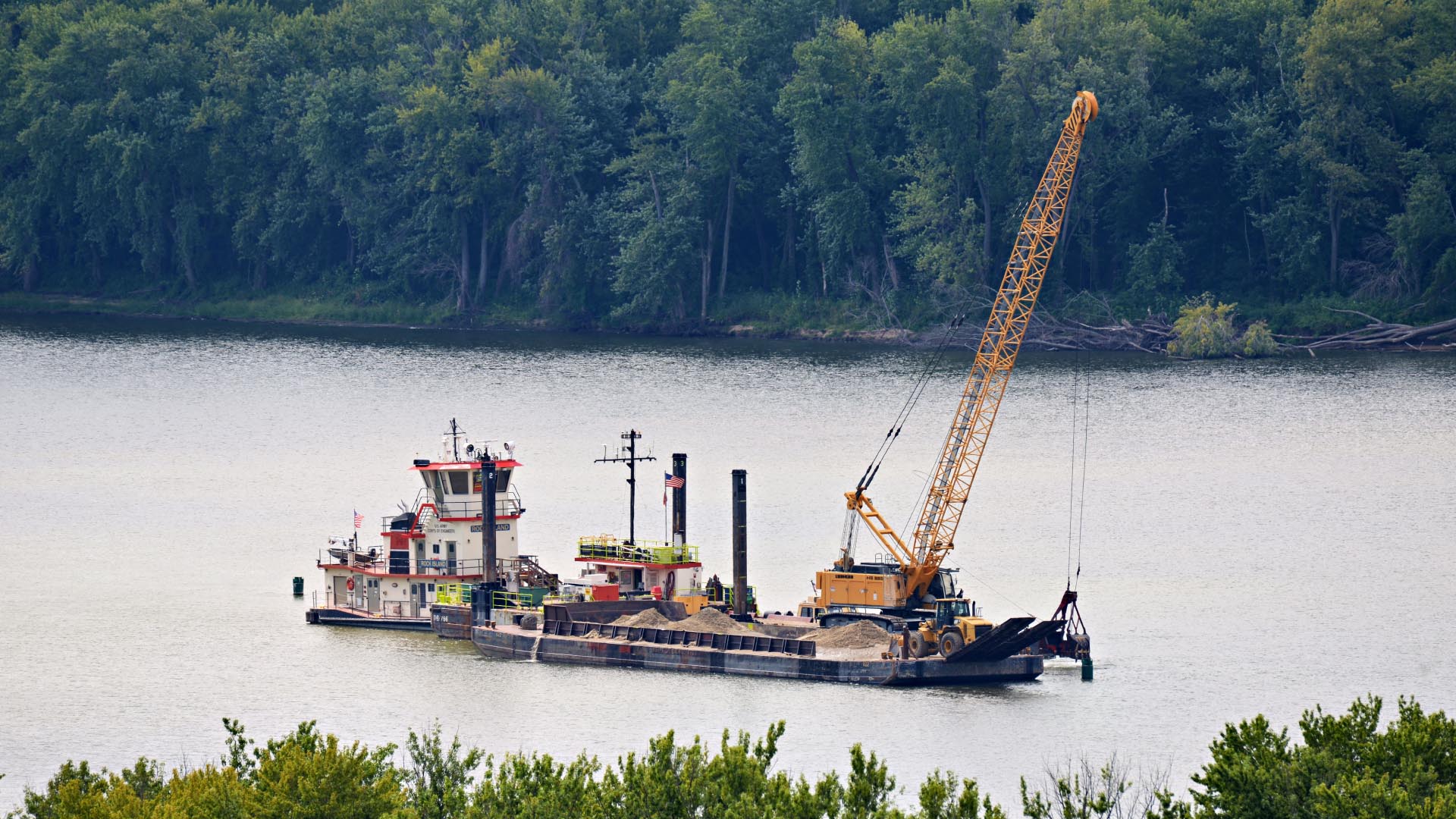USACE Brings Island Material from River Bottom to Surface
Reviving Mississippi River Islands
ST. LOUIS, Mo. (First Alert 4) – Islands are typically known for their presence above water, but some islands submerged beneath the Mississippi River’s waves may soon resurface, thanks to a new initiative by the U.S. Army Corps of Engineers (USACE).
The USACE is implementing a plan to dredge sand and sediment from the riverbed and place it within specially designed rock outlines. The goal is to transform these materials into small sandbars or islands that will provide nesting grounds for birds and habitats for aquatic creatures, according to Army Corps biologists interviewed by First Alert 4.
Why Rebuild Islands in the Mighty Mississippi?
Restoring Lost Land
The purpose of this project, as detailed in USACE documents, is to restore land lost due to infrastructure changes like Lock and Dam 26, which inundated areas such as Piasa and Eagle’s Nest islands. “Today, silt fills the Piasa Island side channel and greatly restricts flow from the main channel.”
The Plan for Island Restoration
Piasa and Eagle’s Nest Habitat Rehabilitation
The Piasa and Eagle’s Nest Habitat Rehabilitation and Enhancement Project, one of 26 active improvement projects along the river, is situated roughly eight miles from Alton. Its objectives include deepening channels and creating three new islands to benefit fish, wildlife, and enhance boating access.
Dredging Operations
An 18-inch cutter suction dredge is being used to excavate over a million cubic yards of material along a two-mile channel. This material is expected to create about 75 acres of island habitat, already attracting bird populations. Designed to last for at least 50 years, these islands will provide nesting areas when above water and support fish populations when submerged. The construction is expected to continue until next year, with biologists noting the ongoing challenge of building against the river’s powerful currents.
Upper Mississippi River Restoration Program
Promoting a Healthier Ecosystem
This island restoration project is part of the larger Upper Mississippi River Restoration (UMRR) Program, which aims to promote a healthier and more resilient river ecosystem. USACE highlights that the program fosters habitats for various species through partnerships at the community, state, and federal levels.
Innovative Use of Dredged Material
Biologists explained that using dredged material for island creation stemmed from an internal USACE initiative. The project has involved years of planning, over 200,000 tons of rock, and extensive efforts to improve the water channel. Maintaining a 9-foot navigable channel on the Upper Mississippi involves multiple methods, including dredging.
Due to the river’s power, the USACE warns that these islands could temporarily submerge or become unstable. Engineers advise boaters to avoid these temporary islands.
Environmental and Commercial Benefits
Protecting the Environment
Aside from facilitating river trade, dredging offers environmental benefits by reducing contaminants that could harm fish, birds, and humans. NOAA notes that environmental dredging is essential for removing pollutants, often originating from sewers, spills, and surface runoff.
Supporting Wildlife
Christine Favilla, the Three Rivers Project coordinator for the Illinois Sierra Club chapter, praised the practice of reusing dredged material. “Reusing that instead of putting it on the shoreline, where it actually may be problematic to fish, turtle species, and mussel beds, I believe it’s a good practice,” she said.
Mike Morrow, Grafton’s mayor and a former district engineer for the Army Corps, added that the islands will benefit the endangered Piping Plover. He emphasized the growing environmental friendliness of river work and noted that the temporary sandbars and islands provide recreational spaces for boaters.
Morrow observed, “People with recreational boats enjoy the sandbars, sitting on lawn chairs, and enjoying a cold drink. It’s like their own little private beach.”
Other Dredging Operations
The Dredge Potter and Additional Projects
Elsewhere on the Mississippi, the Dredge Potter, USACE’s vessel built in the 1930s, continues to clear sediment and support other projects. Near Alton, the USACE and the Illinois Department of Natural Resources are creating four permanent islands—Moonlight, Canvasback, Steamboat, and Powrie—named by local elementary students in a contest. Part of a $7.2 million restoration program, these islands range from 3.9 to 48 acres.
Conclusion
Future Prospects for Mississippi River Restoration
The ongoing efforts by the USACE to restore lost islands in the Mississippi River exemplify the balance between ecological restoration and commercial benefits. Through innovative dredging techniques and collaboration across various levels, the program aims to foster a healthier river ecosystem while providing new habitats for wildlife and recreational spaces for communities.
